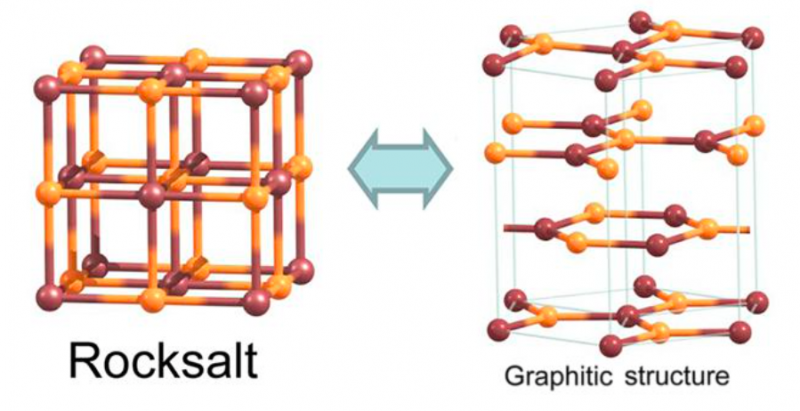Researchers from Skolkovo Institute of Science and Technology (Skoltech), Moscow Institute of Physics and Technology (MIPT), the Technological Institute for Superhard and Novel Carbon Materials (TISNCM), the National University of Science and Technology MISiS (Russia), and Rice University (USA) studied the way thin salt films can break up into graphene-like layers. From modeling data they derived the equation for the number of layers in a crystal that will produce ultrathin films with applications in nanoelectronics.
 Graphene it is a single, honeycomb layer of carbon atoms. It is interesting due to it 2D structure and fascinating electronic and mechanicla properties. Graphene is a single layer of a three-dimensional graphite crystal and its properties (as well as properties of any 2D crystal) are radically different from its 3D counterpart. Since the discovery of graphene, a large amount of research has been directed at new two-dimensional materials with intriguing properties
Graphene it is a single, honeycomb layer of carbon atoms. It is interesting due to it 2D structure and fascinating electronic and mechanicla properties. Graphene is a single layer of a three-dimensional graphite crystal and its properties (as well as properties of any 2D crystal) are radically different from its 3D counterpart. Since the discovery of graphene, a large amount of research has been directed at new two-dimensional materials with intriguing properties
Recently, scientists predicted that reducing of the thickness of films ionic compounds (LiCl, NaCl, NaF etc.) will lead to their splitting on the graphene-like layers due to the polar surfaces, which increases surface energy and makes cubic films unstable.
“We show, that such effect takes place for all ionic compounds with rocksalt crystal structure. Our colleagues from Israel and Japan are already interested in our work and If predicted effect would be confirmed experimentally, then we could talk about possibility of fabrication of new 2D materials for electronics with unique properties,” – told one of the authors Aleksander Kvashnin, research scientist in Skoltech Center for Design, Manufacturing and Materials.
One monolayer could be obtained from the multilayered graphite-like structure by using different experimental techniques. Such layers could be used in electronic devices as insulating substrates or for fabricating van der Waals heterostructures to obtain material with more unique properties.
The results were published in The Journal of Physical Chemistry Letters.
* The Skolkovo Institute of Science and Technology (Skoltech) is a private graduate research university in Skolkovo, Russia, a suburb of Moscow. Established in 2011 in collaboration with MIT, Skoltech educates global leaders in innovation, advances scientific knowledge, and fosters new technologies to address critical issues facing Russia and the world. Applying international research and educational models, the university integrates the best Russian scientific traditions with twenty-first century entrepreneurship and innovation.
Contact information:
Skoltech Communications
+7 (495) 280 14 81
